Starsiege Universe

| a game by | Sierra On-Line |
| Platform: | PC (1999) |
| Editor Rating: | 7/10, based on 1 review |
| User Rating: | 8.7/10 - 3 votes |
| Rate this game: | |
| See also: | Mechs Games |
It's the distant tuture, and the the previous Earthsieges games are now a distant memory of generations long-since departed. Arch enemy of humanity Prometheus and his alien robot chums have fled to Saturn, and are busying themselves with another mechanised squadron of death. Better, quicker and much nastier Cybrids with side impact protection bars and magneto-fusion assault cannons were recently launched at the Jupiter Motor Show, so it's only a matter of time before they go into mass production and strike. But hey, who cares? The Earth's forces have been rebuilt and fortified under the guidance of a new Emperor, and are now more than capable of withstanding another war.
Only trouble is, the Emperor is a bit of a plonker. And immortal. Which means that his 200-year reign is becoming a bit of a bind - his demands are cruel, and his policies domineering. Most worrying of all, his new defensive strategy is centred around Earth, leaving the Martian and Venetian colonies wide open to Cybrid attacks. Time for a revolt - and who better to lead it than the Emperor's right-hand man?
You Up For It?
This is where you step in. The Starsiege game (effectively Earthsiege II) sees you participating in the uprising as either a Human soldier or a Cybrid, er, thing. The history and plot are carefully explained, and you know before you even start that all the nasty pushing and shoving comes to an end in the year 2832 when spin-off title Starsiege: Tribes, bundled with the game and reviewed on page 80, takes over. Effectively, then, it's the end of the popular Earthsiege trilogy but the start of something much bigger, encompassing several storylines, innumerable missions and a huge variation of combat hardware. On top of all that, it's two games for the price of one, making it extremely good value for money. But let's crack on.
Once installed and running, you're presented with a distinctly low-resolution main menu (you know the type: lurid colours straight out of a 70s arcade cabinet and jagged edges you could cut timber with) that instils little confidence in the technology. Push your doubts to one side, though, and get yourself straight into Training to find out how to walk and shoot at the same time. Because that's all you need to know, right?
Well, sort of. Unfortunately for you battle-ready arcade freaks, Starsiege requires perseverance. For starters, although the game is played from the first-person perspective, your HERC is pretty unique in the way it's controlled. You use the cursor keys to get the thing up and running in the right direction, and the mouse to control the gun turrets. Mind you, if you are used to MicroProse's rival MechWarrior series, you won't be flashing the lights and honking the horn every time you go to make a right turn - the developers have thoughtfully included the keyboard layouts from both MechWarrior II: Mercenaries and Heavy Gear. A nice touch.
The important thing to remember, and the key to enjoying the game, is that the HERC keeps going until you tell it to stop. And you don't steer it with the mouse. Before you get that logged into your brain, you'll find yourself bearing down on enemy units, firing at them, and then clomp-clomp-clomping straight past as if you've dropped dead at the controls. Then, before you it - BAM! - you dead at the controls. Many HERCs are vulnerable to attack from the rear and, if you're not careful, getting behind a line of enemy units will see your metal backside toasted with a stream of plasma.
Practice Makes Perfect
Start with the Human campaign and straight away you'll find yourself fighting alongside Rebel champ Harabec - you know, the stupid sonofabitch who triggered this whole damn rebellion thing in the first place. Actually, if you ignore Harabec's agravating All American Hero mannerisms and bleached teeth, he's quite a nice chap. He'll chat to you during the missions, give you the odd spot of tactical guidance and pat you on the back - as much as you can pat someone on the back when they're entombed deep inside 75 tonnes of automated military hardware - when you don't screw up. Early missions will prove to be quite a challenge, as the functions of the various hardware bolt-ons available to you in the HERC fitting bay won't have had time to register. ECM? What does that do? How do I turn it on? What's the difference between the Cuttlefish Cloak and the Chameleon Cloak? Your best bet is to stick to a combination of team collaboration and stealth (commonly known as 'running away lots') as that's the only real way to win through.
The 45 missions themselves have been well thought out, represent a decent balance of action and strategy and immerse you straight away. Many are team oriented, and you'll have to get used to the various squad members chatting to one another, relaying information and requesting back-up. Very rarely are you left wondering what you're supposed to do. as your briefing continues in the form of commanding officers bellowing instructions into your ear hole: "Go over there! Shoot that! No, that'. I'll deal with him!"
As with many similar games, primary and secondary objectives must be met before you can advance through the game, collect your pips and promotions and a wider range of weaponry. Sooner or later you'll also be able to lead your own squad into battle - plot a course on the map, issue orders and so on. Often if you're on a covert assignment, you'll be lurking out of sight and waiting for enemy patrols to pass without seeing you. so it's not just about blasting anything that stomps across your path. Mind you, if you want to blast everything, the supplied mission builder enables you to do just that.
Oh What An Atmosphere
The game is a country mile ahead of rivals in the ambience stakes. The textures, weather effects and landscapes are close to perfection. So, okay, none of us have actually been to Venus or Mars to check out the colour of the soil, but Starsiege makes it look, well, the way you think it should look. Derelict spacecraft slowly rotting at the base of dunes; unfamiliar moons filling the night sky; oddly shaped footprints in the sand - all look just the ticket and serve to remind you that you're stuck on the wrong side of the solar system.
Then there's the 20,000-metre draw distance. And, wow, does this make a difference. Most games you play these days are 'fogged' towards the horizon, making it easier going for the processor as there are fewer objects in your field of vision. Starsiege has no such fog or preset limitations, permitting monumental views across the drifting silt of the Martian landscape and a sense of scale. This means you can see distant enemy units climbing a giant dune, or the glint of an abandoned building on the horizon. With the soporific plod, plod, plod of your HERC, you'll be pretty near mesmerised.
The main game graphics - in other words, the battle units, vehicles and support craft - are all well designed, well rendered and are brought to life with coloured lighting effects and realtime shadows. Each unit has a unique cockpit and a unique perspective on the exterior world and a different orchestra of mechanical noise to accompany you on your long budges. The only real complaint with the way things look is that, despite the dazzling screenshots and efflorescing bomb blasts, almost all your time is spent peering through a windshield. Most enemy HERCs look like stick insects until you're right up close (like, 20 metres away close) and, what with the computer putting a big green ring and red square around every targeted unit, the Starsiege world can often look a bit messy.
In The Heat Of It All
We reckon that many players new to action/strategy gaming will be cursing the way their HERC works. Whereas the basic skills for games like Half-Life and MechWarrior are learned in a matter of minutes (and often flatter your true abilities), Starsiege requires hours of practice. Combine this relative inaccessibility with restricted peripheral vision, no rear-view mirror and the agility of a diesel locomotive, and you soon find yourself banging the keyboard in frustration when outflanked by a troop of Imperial soldiers for what seems like the billionth time. Reload, try again.
To be truthful, that's the game's only real fault. In fact it may be a virtue, as it lends it a certain longevity. If you think you can see your way through the early missions, you'll love it to bits - as we did. But if you're someone who likes to get straight into a game and start blasting without even opening the manual, you won't.
Introducing Tribes
Fancy a sixty-foursome? Take a look at Tribes, the standalone multiplayer game bundled free with Starsiege
Back in the days of four-player network Doom, we were all more than happy to dash around tiny maps, shooting anything that moved and blowing our own faces off with the grenade launcher. You no doubt have fond memories of your first multiplayer sesh (everyone can remember the first time they 'did it'), where just seeing another marine - someone else, a real person! - was a major revelation. Even today, Doom still manages to cut the mustard, its core gameplay elements essentially the same as those found in modem classics such as Half-Life and Quake II. Indeed, some would argue that its multiplayer weapons balance still puts it leagues ahead of more recent titles... but we'll leave that little hot potato for another time.
Unlike more recent first-person blockbusters, though, Doom had zero support for teams. It was left to Quake to whet our appetites, Unreal to wow us with its bot games, and Team Fortress to show what the future held.
With each new foray into the first-person shooter market offering better and better support for cooperative play, hardly anyone went back to straight deathmatch.
Turning Multiplayer
Set in the Starsiege universe, Tribes is a squad-based game that promises to steal some of the thunder from Team Fortress Classic and Team Fortress II. The story takes over from where the main Starsiege game leaves off, with the human race now fragmented and fighting in factions. Gone are the HERCs and the Cybrids, in their place are men in fashionable armoured suits (similar in appearance to the old MechWarriorclans). Everything about it, from the way the arenas are laid out to the inclusion of multi-seater vehicles, has been geared around co-operation with your crewmates.
Outwardly, the game looks a little unvarnished next to the likes of Unreal. Nevertheless, the atmosphere is spot-on and the play silky smooth. The usual array of software gadgetry - coloured lighting, dazzling explosions and volumetric fogging - gets a look in, as does true 30 sound and a passable backing track. The terrain is beautifully rendered, providing you with a heightened sense of scale, and the countless different textures and environments vary from shadowy night deserts to snow-covered mountain ranges. Weather effects add another heavy dollop of character, with the dark, rain-soaked valleys feeling particularly gloomy (probably because they remind us of Wales).
Your base, usually a huge slab of granite looming starkly against the clouds, is home to your squad and to the technology that provides you with weaponry, armour, vehicles and all manner of exciting combat hardware. Despite its size, your HQ remains but another speck on the map when compared to the overall play area - it's possible to go trudging for miles in the wrong direction before a warning buzzer goes off to tell you that you're out of bounds.
You've Been Here Before
Getting going is remarkably simple. Everything focuses on instant action, which means no glitzy cinematics or farting around in options screens - you just get straight into typing your name, selecting a skin, and choosing whether you want to join or host a game.
The Internet screen, where all the various servers are displayed, is reminiscent of GameSpy and will be child's play for those of you used to going multiplayer. The standard Tribes game types should be familiar. Capture The Flag, Capture and Hold, Defend and Destroy, Find and Retrieve, Deathmatch and the obligatory Training. Every Internet game we played was low ping and lag free, with large maps and large squads proving the most entertaining.
The gameplay is fast, simple and standard fare - if you've been plugging away at Half-Lite you'll pick up Tribes in seconds. The prime difference comes in the shape of armour jets - twin boosters on your feet that launch you into the air with a click of the right mouse button. Although flying through the air sounds rather gimmicky, it proves a real boon. Wait for your energy levels to build up, and then squirt yourself skyward. The only criticism is that many rooms and doorways inside your base remain inaccessible unless you fly.
The fighting can vary from a frantic, non-stop tangle to thumb-twiddling boredom. For obvious reasons, large maps with few players fall into the latter category; small maps with more than 32 players are insane. Weapons are different and varied, but like Unreal don't provide the user with much in the way of gratification.
Strategy plays a strong part in Tribes, and teams are able to erect their own perimeter defences in the form of plasma turrets, much as you would in Red Alert You can also opt for much heavier armour, giving you the ability to carry a more effective arsenal at the cost of speed and agility. Interestingly, you can't go around collecting every weapon and every power-up under the sun - each player is restricted to carrying a finite number of goodies, thus reducing the opportunity for team members to stock up before going in for the kill.
Good But Not That Good
Developing a 100 per cent squad-based game must have seemed like a good idea - right up to the point when someone decided to let 'real' people play it. Most Internet participants we came across were loners who clearly liked the idea of being part of a crew, but had their own rather single-minded agenda. There are also no player classes or individual responsibilities, meaning everyone ended up doing the same things for the same objective. This left many of the superb team-specific features ignored, and turned games into an average online deathmatch. And for that there are better alternatives.
If you are a member of a clan or know a large number of people with whom you can band together, Tribes will offer you an experience like no other. Otherwise, keep an eye out for the new Team Fortress.
A New Genre?
The future of games is multiplayer
A somewhat ambitious and pioneering project for a commercial offering (It has no single-player options and requires that you have some form of TCP or IPX-based connectivity), Tribes has been bundled wtth Starslege in order to lend the new 'multiplayer only' subgenre some weight. With the likes of Quake III and Team Fortress looming ever closer, we should find that future titles won't need to be chaperoned In the same way. Put free Internet access, cheaper performance hardware and capped telephone calls into the picture, and you can see why multiplayer games are the only way forward.
Download Starsiege Universe

System requirements:
- PC compatible
- Operating systems: Windows 10/Windows 8/Windows 7/2000/Vista/WinXP

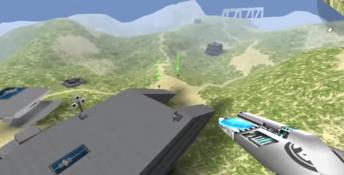

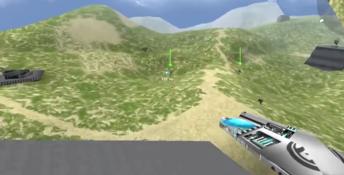

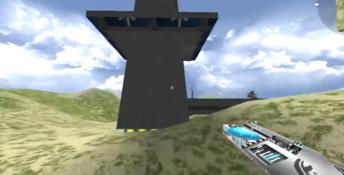
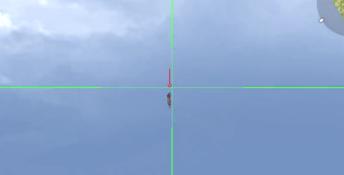

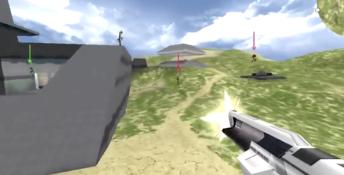



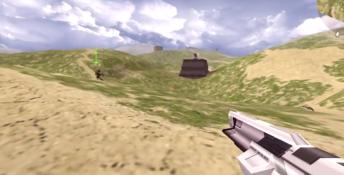


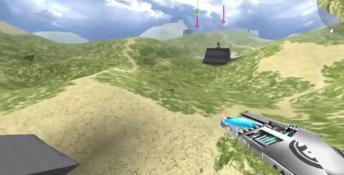

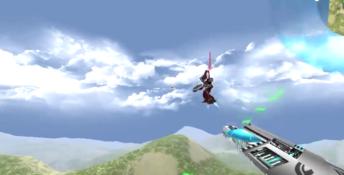
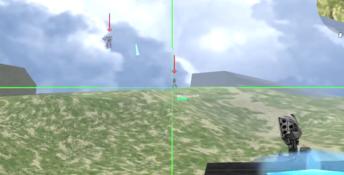
 Sub Culture
Sub Culture
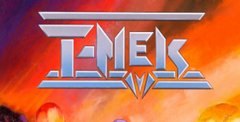 T-MEK
T-MEK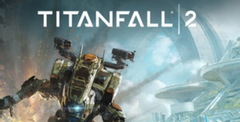 Titanfall 2
Titanfall 2
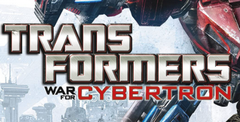 Transformers: War for Cybertron
Transformers: War for Cybertron
 Wild Metal Country
Wild Metal Country